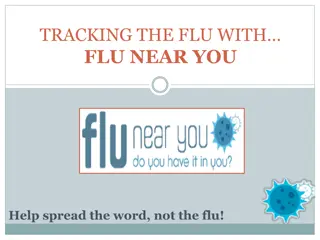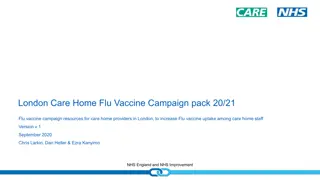Childhood Flu Immunisation Programme 2013/14 Pilot Feedback: Summary and Recommendations
The Childhood Flu Immunisation Programme of 2013/14 was piloted across various geographic areas in England to assess its setup, delivery, and impact. The program aimed to extend flu immunisation to children aged two to less than 17 years, providing important protection to children and indirect protection to high-risk groups. The pilots evaluated workload, staffing requirements, parent and child acceptability, and logistics of vaccine supply. Various models of service delivery were implemented, with different uptake rates achieved. General recommendations and key messages from the pilot areas were gathered to inform future rollout strategies.
Download Presentation

Please find below an Image/Link to download the presentation.
The content on the website is provided AS IS for your information and personal use only. It may not be sold, licensed, or shared on other websites without obtaining consent from the author.If you encounter any issues during the download, it is possible that the publisher has removed the file from their server.
You are allowed to download the files provided on this website for personal or commercial use, subject to the condition that they are used lawfully. All files are the property of their respective owners.
The content on the website is provided AS IS for your information and personal use only. It may not be sold, licensed, or shared on other websites without obtaining consent from the author.
E N D
Presentation Transcript
Childhood Flu Immunisation Programme 2013/14 Pilot Feedback
Contents Background Pilots Summary of areas participating, models and uptake achieved Key messages from the primary school pilot areas Key messages from the secondary school pilot Summary of staffing requirements Other general recommendations / issues 2
Background The Joint Committee on Vaccination and Immunisation recommended that the flu immunisation programme should be extended to include all children aged two to less than 17 years Vaccination will provide important protection to children, and offer indirect protection to people at high risk of complications from flu, including infants, older people, and those in clinical risk groups The programme will eventually offer the vaccination to over 9 million children in England each year Vaccination can only take place within a short period (September - December) Due to the scale of the programme JCVI recommended a phased roll-out 3
Pilots Pilots set up to assess all aspects of set up and delivery including: workload and staffing requirements acceptability to parents and children impact on delivery settings impact on other immunisation and child health programmes logistics of vaccine supply and delivery Seven geographic pilot areas selected to enable delivery to be assessed across a wide variety of settings: Bury, Cumbria, South East Essex, Gateshead, Leicester City, East Leicestershire & Rutland (LLR) and London (Newham and Havering). Six of the pilot areas delivered the programme using a school based programme. Due to the rural location Cumbria chose a local pharmacy and General Practice based model 4
Summary of models of service delivery in each pilot and uptake achieved Inactivated vaccine for with contraindications given by pilot team High risk children vaccinated by pilot team Site Uptake Model Provider Bury * 63.5% School based Private Provider Yes Yes Cumbria 35.8% Community Pharmacy/GP Yes Referral to GP Gateshead 52.3% School based School nursing service Referral to GP Referral to GP Havering 63.8% School based Trust immunisation team Yes Yes Leicester 51.7% School based Trust immunisation team Yes Referral to GP Newham 45.6% School based Trust immunisation team Yes Yes SE Essex** 71.5% School based Trust immunisation team Yes Yes * Bury included one secondary school towards the end of the programme ** Essex included self-administration in year 6 and vaccination by Health care support workers (HCSWs) 5
Gateshead 52.3% (7,784/14,895) Cumbria 35.8% (13,010/36,360) Bury 63.5% (10,340/16,280) Leicester City and Rutland 51.7% (28,444/55,014) South EastEssex 71.5% (17,687/24,723) Cumulative uptake of LAIV in primary school-age children in pilot sites 2013-14, England Havering 63.8% (13,102/20,545) Newham 45.6% (14,425/31,658) 6
Gateshead school nursing model - key messages Programme delivered by qualified school nurses is good model to ensure safety costly and may not be scalable- further piloting required Having a parent attend for vaccination will ensure correct identification of child guaranteed is more disruptive for schools may adversely impact on uptake not be recommended for the future Referring children at high risk to GP may lead to reduced uptake in the most vulnerable children increases clinical time to triage consent forms 7
Cumbria community model - key messages (1) Pharmacies can deliver high volume of vaccines in the community over 80% of 13,000 vaccines given by pharmacies Pharmacists are very enthusiastic to be involved also interested in vaccinating in schools Pharmacist delivery was well accepted by parents (based on evaluation from those attending) 8
Cumbria community model key messages (2) Large number of pharmacy providers time consuming for contracting increase potential for wastage with vaccine distribution Pharmacies can supply timely vaccine uptake data web-based system provided live data enabled timely project monitoring and management Model may work well as back-up to delivery in school delivery 9
Bury independent provider model - key messages Independent provider can work successfully in schools provided that early and on-going engagement of schools and stakeholders (Bury Council, PHE, NHSE, Bury CCG) collaboration between area teams, providers, and schools (including school nursing service) involvement of Local Authority Department for Education, Director of Children s Services Acceptance of consent forms on the day can be problematic needs system and staff to deal with this 10
Leicestershire & Rutland immunisation team model key messages Immunisation team approach largely successful good communication with schools required to ensure: appropriate input and involvement of school staff most efficient and effective approach to children provision of appropriate facilities for vaccination session Administrative support team key to success and required to order goods and vaccine, prepare documentation arrange delivery of materials/vaccines (maintaining cold chain) scheduling communication with parents logistics and administration on the day, data entry work in shifts (12 hour days) Porcine gelatine content of Fluenz had an impact on uptake 11
Havering immunisation team model - key messages Immunisation team model largely successful early engagement with schools essential significant problems with recruitment and HR processes for temporary staff Significant clinical burden triaging consent forms and contacting parents need early identification of high risk children prioritise special schools Certificates and stickers for vaccinated children popular! 12
Newham immunisation team - key messages Immunisation team model was largely successful positive engagement with schools/wider community essential to minimise impact significant problems with recruitment and HR processes for temporary staff Partnership with other agencies was vital to the project s success including children centres, GPs, education, communication team Porcine gelatine content of vaccine potentially adversely affected uptake 13
Essex immunisation team - key messages Immunisation team model was largely successful adjusted timetabling for HPV immunisation and National Child Measurement programmes staff in existing posts utilised for programme able to appoint additional staff on year-long contracts Health care assistants provide a cost effective skill mix administering vaccines under Patient Specific Direction signed off by a nurse prescriber with access to the children s clinical records Self-administration for eligible children in Year 6 was successful well received by pupils, approximately 65% self administered more time consuming than nurse administration 14
Bury private provider - secondary school pilot Overall secondary school pilot in years 7-11 was successful uptake 55% (492/897 vaccinated) took 4.5 hours across 2 days (2 mins per child) Group self administration didn't go well further piloting required Whole class approach not tried due to concerns about privacy for consent checking classes moved round every 30 mins Used procedure recommended as used for school photos pupils provided with an appointment time at registration attended assembly hall in groups of about ten pupils 15
Staffing recommendations Generally need around 3-6 nurses and 2 administrators per primary school: 3-4 nurses (Leicester and Havering) 2 nurses + 2 admin for each 100 children, plus 1 additional nurse for every 100 children (Bury) Temporary staff created additional work for recruitment and HR Health care support workers can work but need prescribers Having dedicated driver allocated to programme to deliver vaccine to schools worked well (Bury) 16
General issues and recommendations (1) Set-up time for programmes is critical: ideally liaise with schools in summer term visits to schools recommended so that requirements of programme understood and facilities assessed communications strategy: local press, newsletters, website, consider visiting school assemblies etc. 17
General issues and recommendations (2) Administrative burden is considerable and includes two different groups of staff: Clinical triage of consent forms to assess clinical eligibility contacting parents for further detail about clinical conditions e.g. asthma Non-clinical preparation of materials liaison with school to distribute and collection of materials coordination at vaccination sessions (school and immunisation team) data collection and sharing Estimate that administration requires 2-3 times more time than vaccination 18
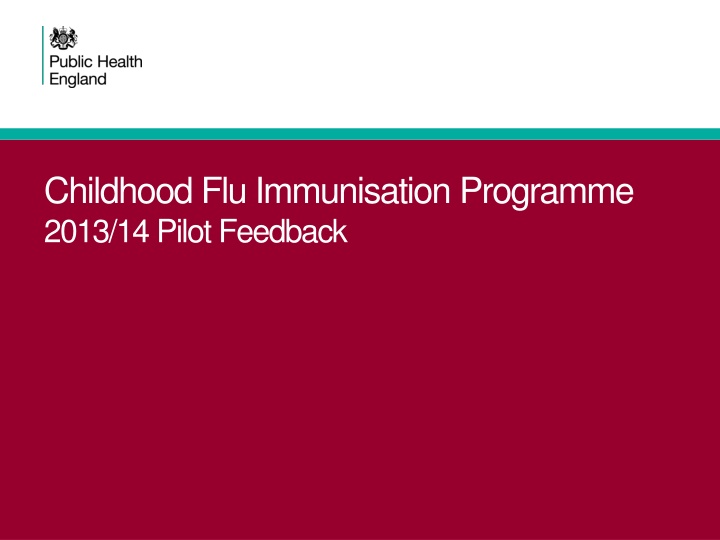








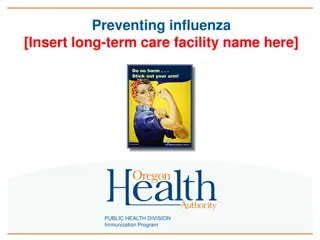

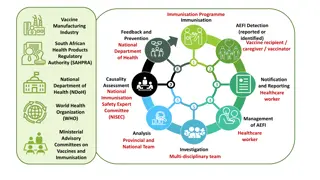

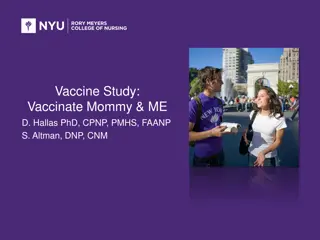
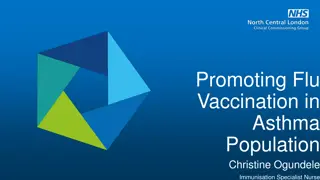


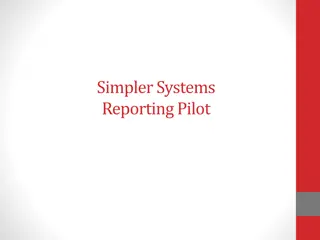

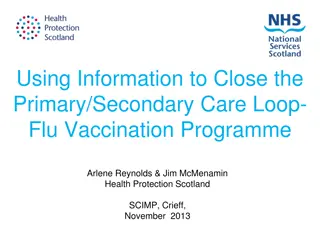
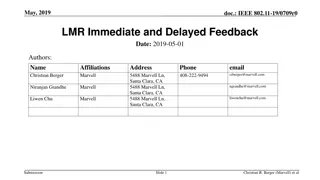
![Preventing Influenza at [Name of Critical Access Hospital]](/thumb/233818/preventing-influenza-at-name-of-critical-access-hospital.jpg)
